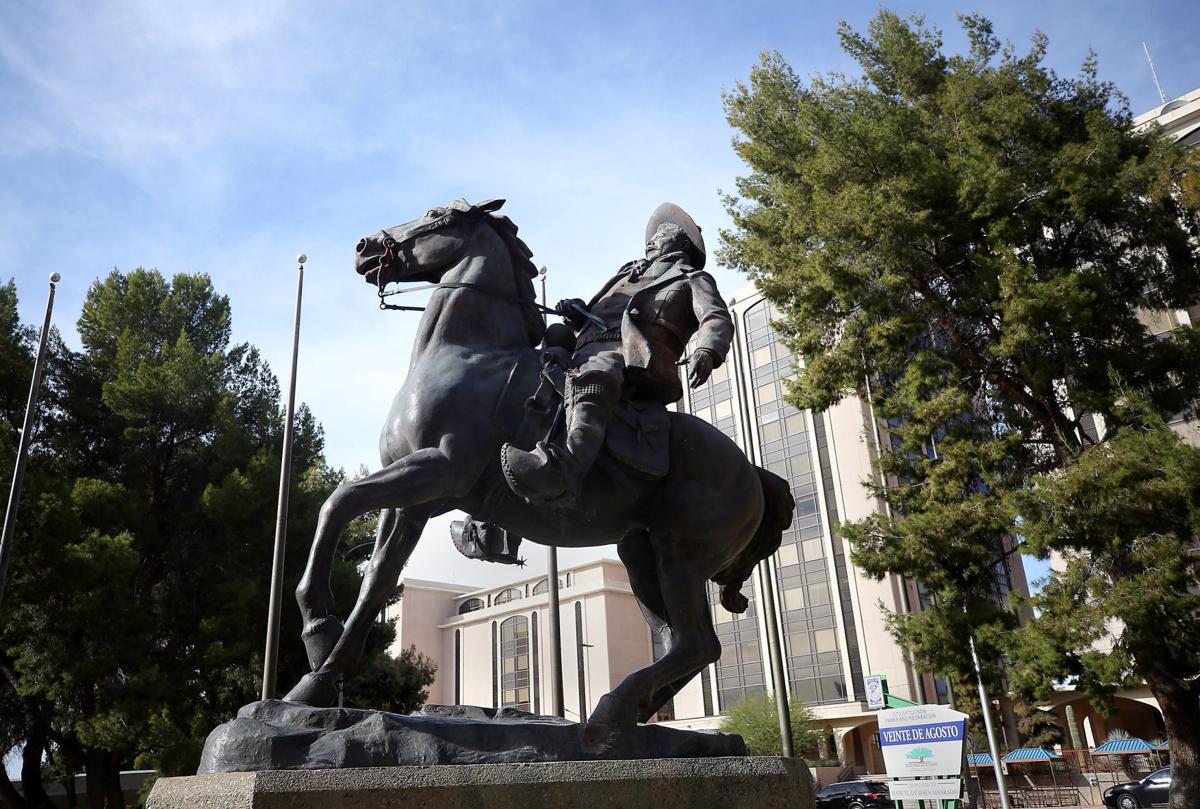The following column is the opinion and analysis of the writer.
Now that statues are coming down around the world, voices are being raised again in Tucson demanding the removal of Pancho Villa’s statue. Most people are uninformed about Villa’s place in history on both sides of the border.
The Mexican revolution was chaotic and violent, like most civil wars. It was not just power-hungry guys killing each other off. It swept away feudal relations in most of the country and instituted the Constitution of 1917, which guaranteed free public education to every child, protection for workers and land for the landless.
The Revolution overthrew the oligarch, Porfirio Díaz, who spent 31 years in power. It provided mechanisms to ensure Mexican sovereignty over its own natural resources. It established social services throughout towns and countryside.
While some of these reforms have been undermined, the revolution brought enduring improvements. Before the revolution, independent small landholders were dispossessed by huge hacendados like the Terrazas family. Yaqui Indians from Sonora were shipped to the Yucatán to work as slaves.
Political bosses were imposed on communities with traditions of local self-rule. In 1906, U.S. troops were sent in against striking copper miners at Cananea who demanded equal pay. Historians of the Revolution disagree about many issues, but no serious scholar denies that it was about politics, meaning relations of power among social classes.
There were important ideological differences among its leaders. It was not a demolition derby or a free-for-all. President Francisco Madero, a moderate reformer, was assassinated with the connivance of U.S. Ambassador Henry Lane Wilson, to put a reactionary caudillo in power.
Pancho Villa was unique among revolutionary leaders for his meteoritic rise from a family of destitute sharecroppers. He became both a businessman and an outlaw. He learned to read in prison. He turned a crowd of guerrilla fighters and unemployed cowboys into a disciplined fighting force.
When his army occupied the cities, he closed the saloons and executed looters. He was the first general to provide medical aid to his troops, in the form of hospital train cars, and he supported the widows of fallen soldiers. His governorship of the state of Chihuahua was egalitarian, he established schools, including boarding schools for homeless children and gave rations to the unemployed.
Villa’s defeat at Agua Prieta was guaranteed by President Woodrow Wilson’s decision to back his rival, Venustiano Carranza, allowing Carranza’s troops to move on U.S. railways from Texas to Douglas, then Agua Prieta. Villa was enraged by this betrayal. Until then, he had protected U.S. holdings.
Chihuahua’s mining production, much of it in U.S. hands, increased during the turmoil of the revolution. The terrible revenge Villa exacted from San Pedro de la Cueva — whose defenders shot first — was anything but cold-blooded and calculated. Villa acted in a paroxysm of rage, which he regretted the next day, according to his biographer Friedrich Katz.
Those who study Mexico also note the persistent violations of the Treaty of Guadalupe Hidalgo in terms of the land and cultural rights of Mexicans residing in what became U.S. territory, the pillaging of Mexico City by U.S. troops in 1848, the lynchings of Mexicans living in the Texas borderlands by Texas Rangers, for example in Porvenir in 1918, the subject of a recent documentary film produced by Hector Galán, and the deplorable working and living conditions of farmworkers today. They, too, are Americans and should be counted among the “Americans killed.”
Villa was a hero. If his statue is deported from Tucson, Agua Prieta will welcome him.





